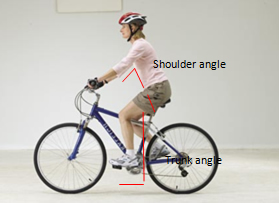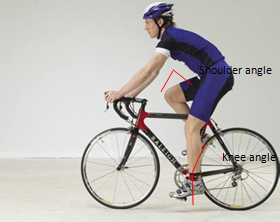Whether you prefer rough trails, smooth roads, or anything in between, there is a pivotal interaction between your body and the bike. Many cyclists suffer from various types of pain that can range from the bottom of the foot all the way up to the neck. The pain can be effected by the type of bike as well as your personal riding style, both will influence the type of bike set up needed. However, there are a few general adjustments that can be made to make your biking experience more enjoyable. First, you need to know what type of bike you have.
There are many types of bikes out there from recreational, cruiser, road, mountain, and hybrid. Next, your personal riding style is also a critical piece of the puzzle and can be determined by the amount of miles rode, terrain, and speed. A more competitive style tends to have higher speeds and smoother terrain; while a recreational style typically has slower speeds and with a varied terrain.
Here are a few tips to keep in mind for bike posture:
Recreational
 1. Trunk position can range from 45-80 degrees from the horizontal. The greater the angle the less aggressive the position.
1. Trunk position can range from 45-80 degrees from the horizontal. The greater the angle the less aggressive the position.
2. Shoulder position should be relaxed and the shoulder angle should be between 80-90 degrees.
3. The knee cap should be over the pedal (when pedal is horizontal) and the knee angle is between 35 and 50 degrees.
4. Neck will be in a neutral position.
Competitive
1.  Trunk position can range from 35-50 degrees from the horizontal. The greater the angle the less aggressive the position.
Trunk position can range from 35-50 degrees from the horizontal. The greater the angle the less aggressive the position.
2. Shoulder position shoulder be relaxed and the shoulder angle should be between 90-95 degrees.
3. The knee cap should be over the pedal (when pedal is horizontal) and the knee angle is between 30 and 35 degrees.
4. Neck will be in a neutral position.
Notice that in both riding styles the wrist and neck will be in a neutral position. The seat should be level to the ground and pressure should be distributed evenly over the seat with little pressure on the hands.
